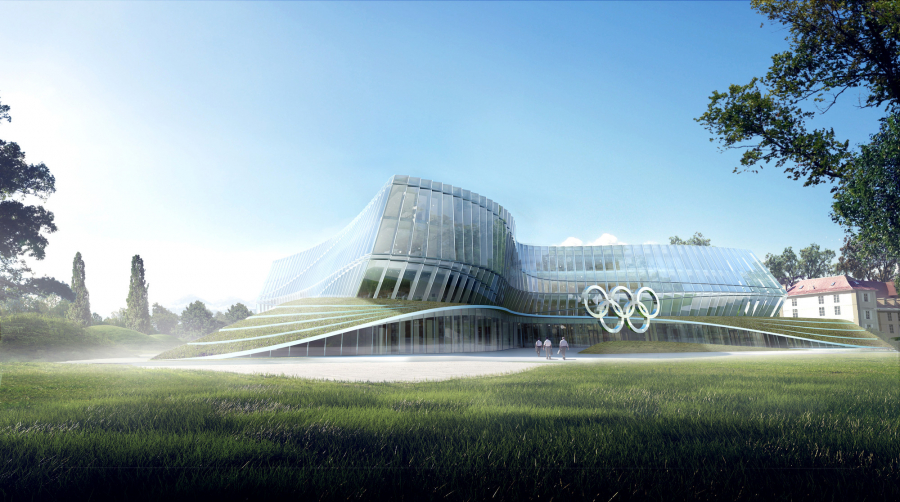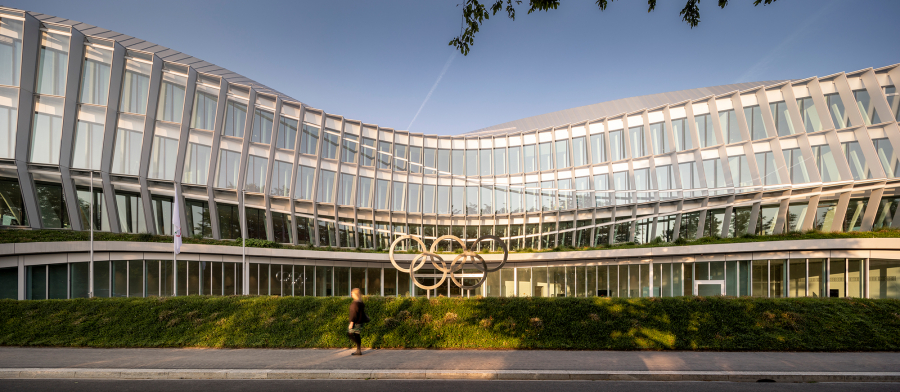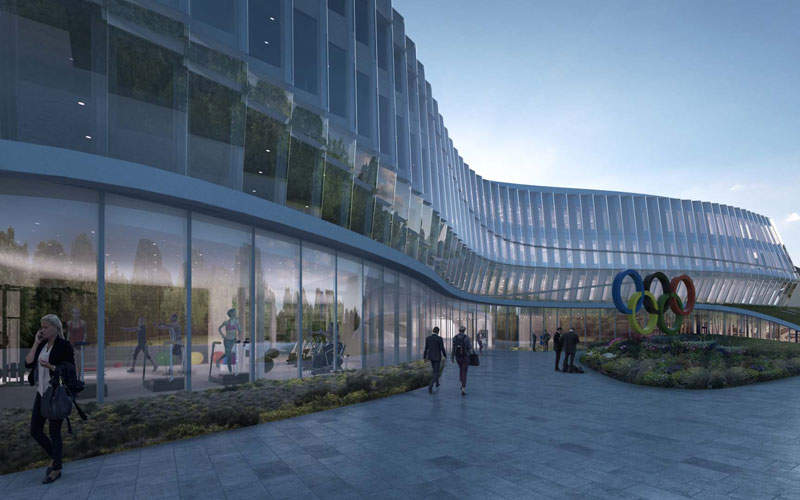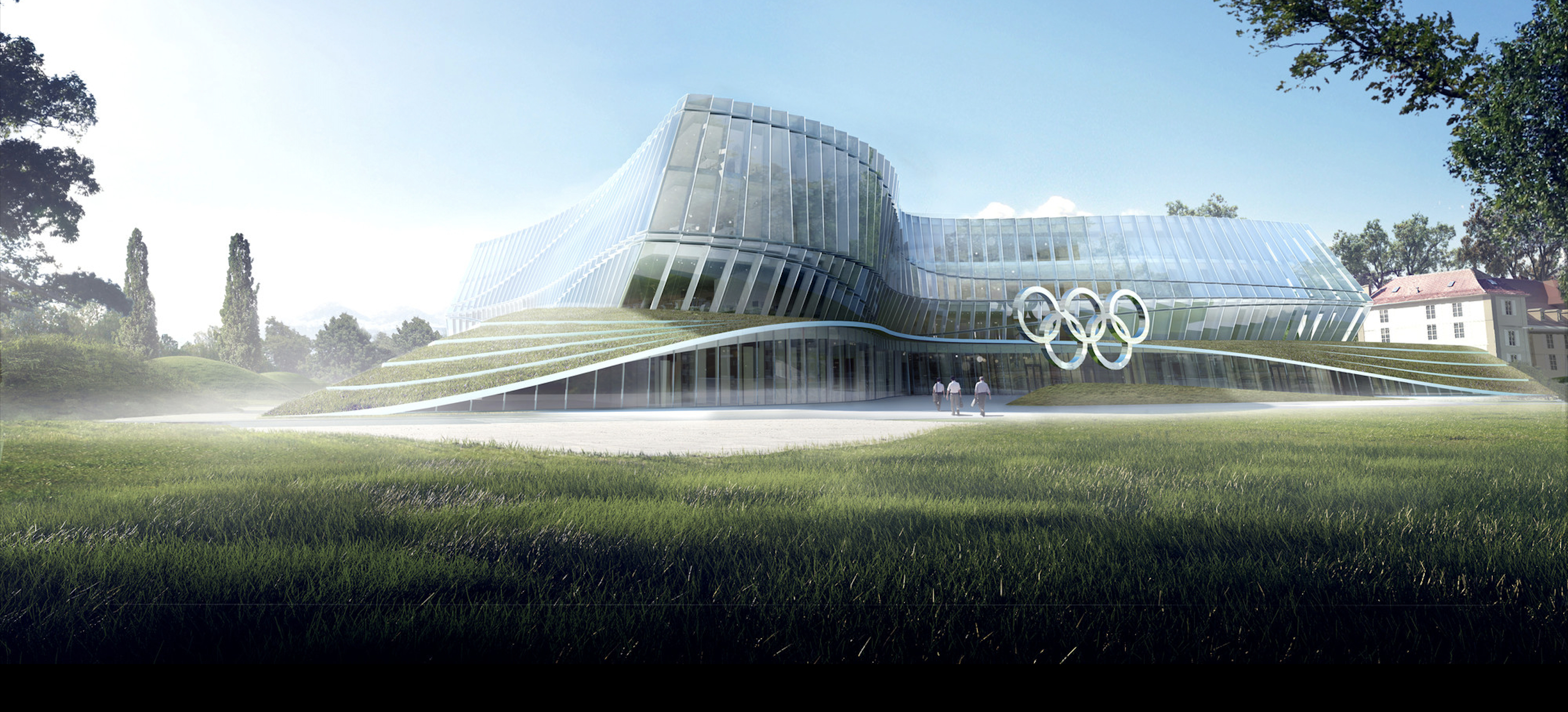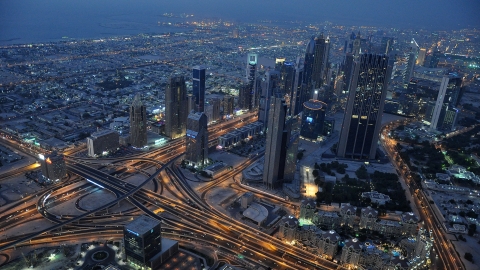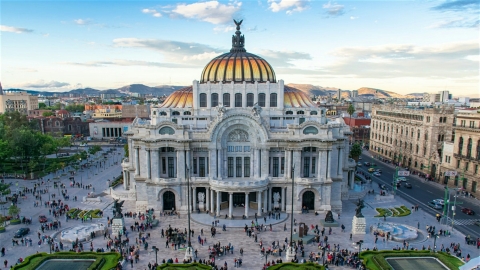This building, ideally located on Lake Geneva, was designed by Danish architects 3XN in collaboration with Swiss architects IttenBrechbühl. Within the building's grounds is the Louis Bourget Park, next to the 18th-century Château de Vidy, now used as the headquarters of the International Olympic Committee (IOC).
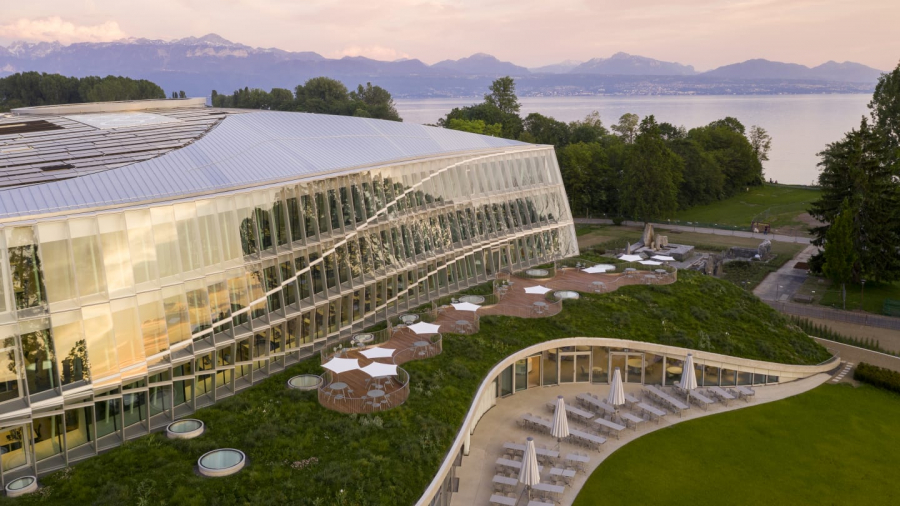
Created for 500 IOC staff, the design of the new headquarters has created a feat in Olympic history as more than 95% of the building's construction materials are environmentally friendly such as recycled materials.
In addition, rainwater will be collected to be used for watering the green plants and the toilet system in the building. Solar panels will also be used and have a capacity equivalent to the consumption of 60 households in Switzerland.
“It is by far the most sustainable building in the world,” says 3XN founder Kim Herforth Nielsen.
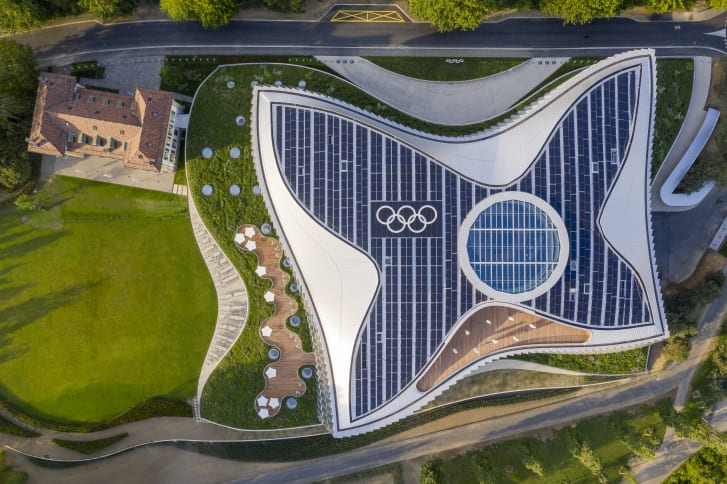
The building's orientation is also chosen to optimize shading, avoid sunlight, and limit the use of air conditioning in the building while still taking advantage of natural light thanks to the glass door structure.
“To be able to maintain this sustainability, the most important thing is daylight, not too much sunlight. The facade is shaded, it does not allow too much sunlight to come through the glass and heat the building. To make the building more sustainable is a challenge, but we have overcome it in this way,” Nielsen added.
A 27,000 square meter area including a green roof, rice fields and a fitness center are also incorporated into the building's design.
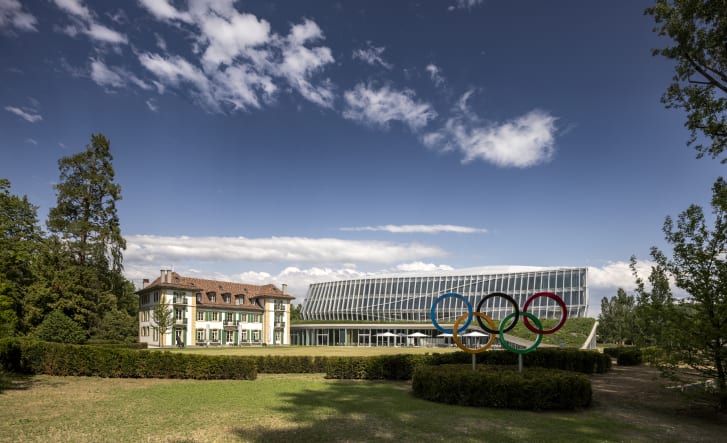
Reflecting the Olympic spirit, the building has been designed to convey a sense of movement through a series of attempts to mimic the silhouette of a ski jump, which inspired the design of the building’s facade. The staircase design also incorporates the five Olympic rings, while the butterfly-shaped building will optimize the use of daylight and allow views of the surrounding park.
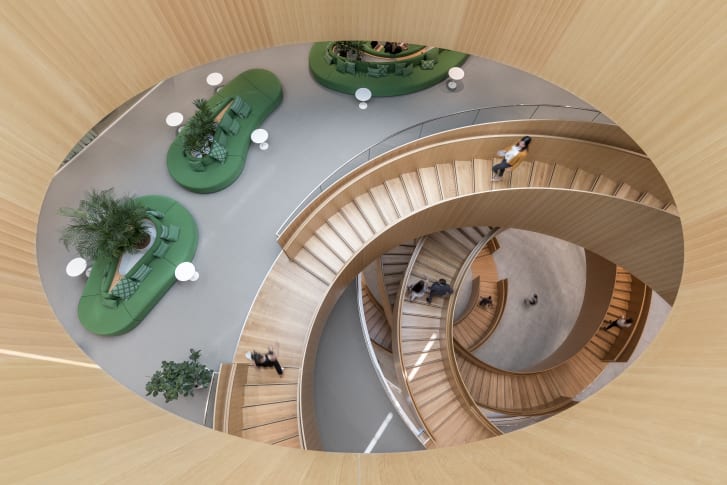
“With its unique, dynamic façade design, the building will appear different from each angle and convey the dynamic energy of the athletes. The interior design is also kept as minimal as possible. This open and flexible environment will easily adapt to a variety of working styles, both present and future.
Construction will begin in May 2016 and cost 145 million Swiss Francs.
Let's see some more graphic images of the building's design:
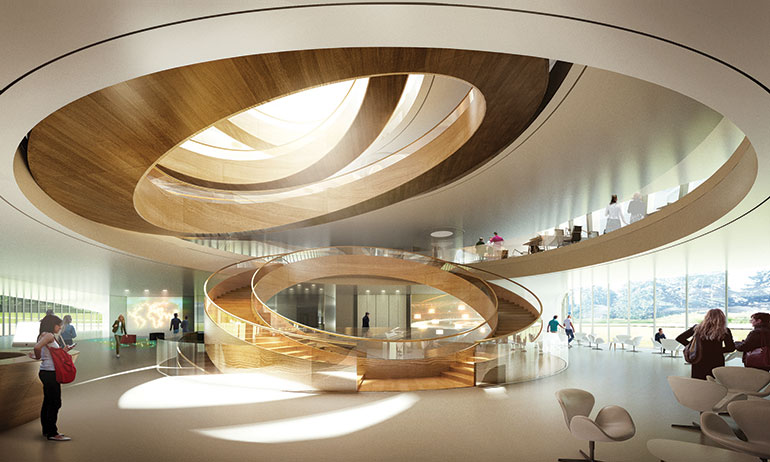
The staircase is designed in the shape of 5 rings symbolizing the Olympics.
